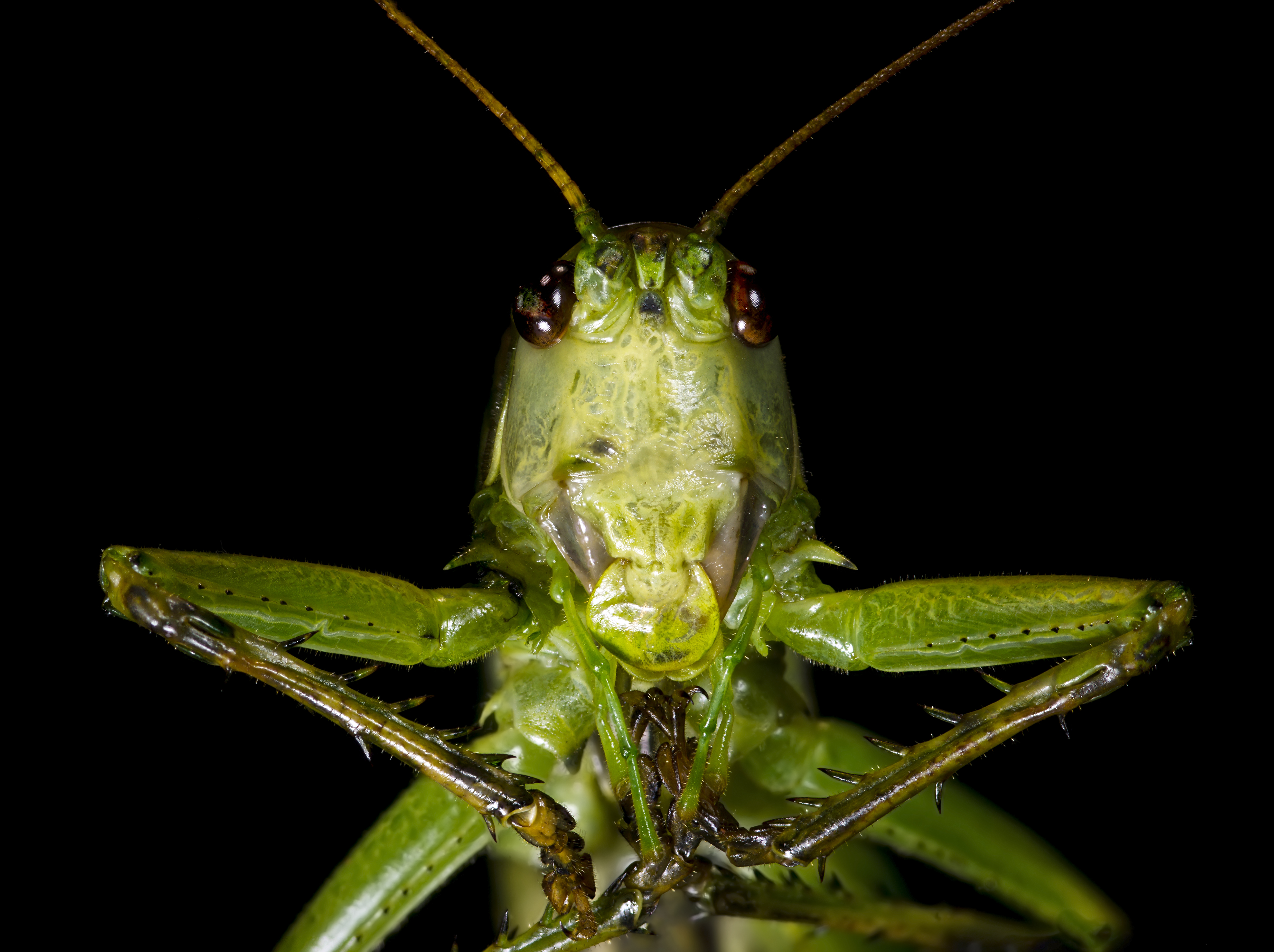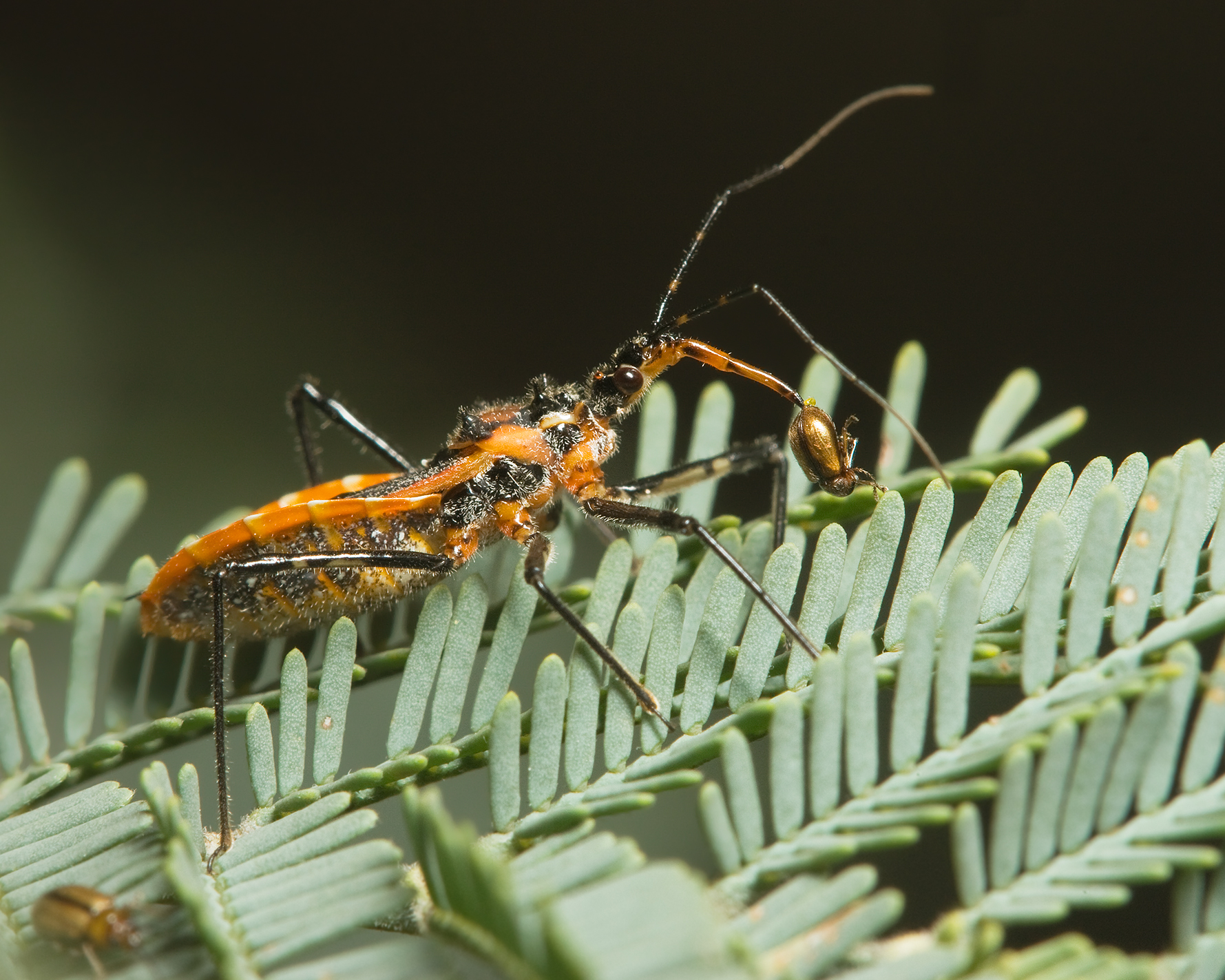|
Stridulation
Stridulation is the act of producing sound by rubbing together certain body parts. This behavior is mostly associated with insects, but other animals are known to do this as well, such as a number of species of fish, snakes and spiders. The mechanism is typically that of one structure with a well-defined lip, ridge, or nodules (the "scraper" or ''plectrum'') being moved across a finely-ridged surface (the "file" or ''stridulitrum''—sometimes called the ''pars stridens'') or vice versa, and vibrating as it does so, like the dragging of a phonograph needle across a vinyl record. Sometimes it is the structure bearing the file which resonates to produce the sound, but in other cases it is the structure bearing the scraper, with both variants possible in related groups. Common onomatopoeic words for the sounds produced by stridulation include ''chirp'' and ''chirrup''. Arthropod stridulation Insects and other arthropods stridulate by rubbing together two parts of the body. These a ... [...More Info...] [...Related Items...] OR: [Wikipedia] [Google] [Baidu] |
Grasshopper
Grasshoppers are a group of insects belonging to the suborder Caelifera. They are amongst what are possibly the most ancient living groups of chewing herbivorous insects, dating back to the early Triassic around 250 million years ago. Grasshoppers are typically ground-dwelling insects with powerful hind legs which allow them to escape from threats by leaping vigorously. Their front legs are shorter and used for grasping food. As hemimetabolous insects, they do not undergo complete metamorphosis; they hatch from an egg into a Nymph (biology), nymph or "hopper" which undergoes five moults, becoming more similar to the adult insect at each developmental stage. The grasshopper hears through the tympanal organ which can be found in the first segment of the abdomen attached to the thorax; while its sense of vision is in the compound eyes, a change in light intensity is perceived in the simple eyes (ocelli). At high population densities and under certain environmental conditions, som ... [...More Info...] [...Related Items...] OR: [Wikipedia] [Google] [Baidu] |
Cricket (insect)
Crickets are orthopteran insects which are related to Tettigoniidae, bush crickets and more distantly, to grasshoppers. In older literature, such as Augustus Daniel Imms, Imms,Imms AD, rev. Richards OW & Davies RG (1970) ''A General Textbook of Entomology'' 9th Ed. Methuen 886 pp. "crickets" were placed at the family level (''i.e.'' Gryllidae), but contemporary authorities including Dan Otte, Otte now place them in the superfamily Grylloidea. The word has been used in combination to describe more distantly related taxa in the suborder Ensifera, such as Stenopelmatoidea, king crickets and mole crickets. Crickets have mainly cylindrically shaped bodies, round heads, and long antenna (biology), antennae. Behind the head is a smooth, robust pronotum. The abdomen ends in a pair of long Cercus, cerci; females have a long, cylindrical ovipositor. Diagnostic features include legs with 3-segmented Arthropod leg#Tarsus, tarsi; as with many Orthoptera, the hind legs have enlarged femora ... [...More Info...] [...Related Items...] OR: [Wikipedia] [Google] [Baidu] |
Tettigoniidae
Insects in the family (biology), family Tettigoniidae are commonly called katydids (especially in North America) or bush crickets. They have previously been known as "long-horned grasshoppers". More than 8,000 species are known. Part of the suborder Ensifera, the Tettigoniidae are the only extant (living) family in the superfamily Tettigonioidea. Many species are Nocturnality, nocturnal in habit, having strident mating calls and may exhibit mimicry or camouflage, commonly with shapes and colours similar to leaves.[] Etymology The family name Tettigoniidae is derived from the genus ''Tettigonia'', of which the Tettigonia viridissima, great green bush cricket is the type species; it was first described by Carl Linnaeus in 1758. In Latin ''tettigonia'' means a kind of small cicada, leafhopper; it is from the Greek τεττιγόνιον ''tettigonion'', the diminutive of the imitative (onomatopoeic) τέττιξ, ''tettix'', cicada. All of these names such as ''tettix'' with repeat ... [...More Info...] [...Related Items...] OR: [Wikipedia] [Google] [Baidu] |
Insect
Insects (from Latin ') are Hexapoda, hexapod invertebrates of the class (biology), class Insecta. They are the largest group within the arthropod phylum. Insects have a chitinous exoskeleton, a three-part body (Insect morphology#Head, head, Thorax (insect anatomy), thorax and abdomen (insect anatomy), abdomen), three pairs of jointed Arthropod leg, legs, compound eyes, and a pair of antenna (biology), antennae. Insects are the most diverse group of animals, with more than a million described species; they represent more than half of all animal species. The insect nervous system consists of a insect brain, brain and a ventral nerve cord. Most insects reproduce Oviparous, by laying eggs. Insects Respiratory system of insects, breathe air through a system of Spiracle (arthropods), paired openings along their sides, connected to Trachea#Invertebrates, small tubes that take air directly to the tissues. The blood therefore does not carry oxygen; it is only partly contained in ves ... [...More Info...] [...Related Items...] OR: [Wikipedia] [Google] [Baidu] |
Reduviidae
The Reduviidae is a large Cosmopolitan distribution, cosmopolitan family of the suborder Heteroptera of the Order (biology), order Hemiptera (true bugs). Among the Hemiptera and together with the Nabidae almost all species are terrestrial ambush predators; most other predatory Hemiptera are aquatic. The main examples of non-predatory Reduviidae are some blood-sucking Parasitic nutrition#Ectoparasitism, ectoparasites in the subfamily Triatominae, with a few species from South America noted for their ability to transmit Chagas disease. Though spectacular exceptions are known, most members of the family are fairly easily recognizable: they have a relatively narrow neck, sturdy build, and formidable curved proboscis (sometimes called a Rostrum (anatomy), rostrum). Large specimens should be handled with caution, if at all, because they sometimes defend themselves with a very painful stab from the proboscis. Taxonomy The family members are almost all predatory, except for a few blood-su ... [...More Info...] [...Related Items...] OR: [Wikipedia] [Google] [Baidu] |
Panoploscelis Specularis
''Panoploscelis'' (commonly referred to as spiny lobster katydids or giant lobster crickets) is a genus of very large insects belonging to the Pseudophyllinae, true katydid tribe (biology), tribe Eucocconotini, which is a Family (biology), subfamily of the Tettigoniidae. Like the other members of the suborder Ensifera, ''Panoploscelis'' are part of the insect order (biology), order Orthoptera, which also contains cricket (insect), crickets, grasshoppers and locusts. Members of this genus are among the largest katydids of the Neotropical realm, Neotropics. These Terrestrial animal, terrestrial, predation, predatory insects are endemism, endemic to the remote and relatively inaccessible tropical and subtropical moist broadleaf forests, neotropical rainforests of Central America, Central and South America. Little is known about this genus, because data thus far have been collected from a very limited number of specimens. The first specimen, a female of the species ''Panoploscelis arm ... [...More Info...] [...Related Items...] OR: [Wikipedia] [Google] [Baidu] |
Panoploscelis
''Panoploscelis'' (commonly referred to as spiny lobster katydids or giant lobster crickets) is a genus of very large insects belonging to the true katydid tribe Eucocconotini, which is a subfamily of the Tettigoniidae. Like the other members of the suborder Ensifera, ''Panoploscelis'' are part of the insect order Orthoptera, which also contains crickets, grasshoppers and locusts. Members of this genus are among the largest katydids of the Neotropics. These terrestrial, predatory insects are endemic to the remote and relatively inaccessible neotropical rainforests of Central and South America. Little is known about this genus, because data thus far have been collected from a very limited number of specimens. The first specimen, a female of the species '' P. armata'', was described in 1869 by Samuel Hubbard Scudder. The male of the species '' P. specularis'' was described for the first time in 2003. Taxonomy The subfamily Pseudophyllinae was first described by Hermann Burmei ... [...More Info...] [...Related Items...] OR: [Wikipedia] [Google] [Baidu] |
Pheidole Pallidula
''Pheidole pallidula'' is a species of ant in the genus ''Pheidole''. It is widespread around the Mediterranean The Mediterranean Sea ( ) is a sea connected to the Atlantic Ocean, surrounded by the Mediterranean basin and almost completely enclosed by land: on the east by the Levant in West Asia, on the north by Anatolia in West Asia and Southern .... Colonies can be characterised as being monogynous or polygynous, meaning it can be ruled by one queen or many. Both ruling forms can be seen in colonies from the same population. References External links * pallidula Hymenoptera of Europe Insects described in 1849 {{myrmicinae-stub ... [...More Info...] [...Related Items...] OR: [Wikipedia] [Google] [Baidu] |
Geotrupidae
Geotrupidae (from Greek γῆ ''(gē)'', earth, and τρῡπητής ''(trȳpētēs)'', borer) is a family of beetles in the order Coleoptera. They are commonly called earth-boring dung beetles or dor beetles. Most excavate burrows in which to lay their eggs. They are typically detritivores, provisioning their nests with leaf litter (often moldy), but are occasionally coprophagous, similar to dung beetles. The eggs are laid in or upon the provision mass and buried, and the developing larvae feed upon the provisions. The burrows of some species can exceed 2 metres in depth. A few species communicate by stridulation (rubbing body parts together to make sounds). Classification They were originally classified as the subfamily Geotrupinae in the family Scarabaeidae before being elevated to a family. Traditionally the family Bolboceratidae was included (as the subfamily Bolboceratinae) on the basis of the number of antenna segments, but examination of a different set of char ... [...More Info...] [...Related Items...] OR: [Wikipedia] [Google] [Baidu] |
Mutillidae
Velvet ants (Mutillidae) are a family of more than 7,000 species of wasps whose wingless females resemble large, hairy ants. Their common name velvet ant refers to their resemblance to an ant, and their dense pile of hair, which most often is bright scarlet or orange, but may also be black, white, silver, or gold. Their bright colors serve as aposematic signals. They are known for their extremely painful stings, (the sting of the species '' Dasymutilla klugii'' rated a 3 on the Schmidt pain index and lasts up to 30 minutes), and has resulted in the common name "cow killer" or "cow ant" being applied to the species '' Dasymutilla occidentalis.'' However, mutillids are not aggressive and sting only in defense. In addition, the actual toxicity of their venom is much lower than that of honey bees or harvester ants. Unlike true ants, they are solitary, and lack complex social systems. Distribution Mutillidae can be found worldwide with about 230 genera or subgenera and around 8,0 ... [...More Info...] [...Related Items...] OR: [Wikipedia] [Google] [Baidu] |
Passalidae
Passalidae is a family of beetles known variously as "bessbugs", "bess beetles", "betsy beetles", "betsy bugs", or "horned passalus beetles". Nearly all of the 500-odd species are tropical; species found in North America are notable for their size, ranging from 20 to 43 mm, for having a single "horn" on the head, and for a form of social behavior unusual among beetles. Bodies are elongate-cylindrical and black overall; ventral surfaces may be covered with yellow setae. The head is narrower than the thorax, with antennae consisting of 10 antennomeres with a three-segment club. The elytra are elongate with parallel sides, and heavily striated. They are quasisocial (common nest + brood caring) beetles that live in groups within rotting logs or stumps. The beetles will excavate tunnel systems within rotting wood where the females then lay their eggs. They care for their young by preparing food for them and helping the larvae construct the pupal case. Both adults and larvae ... [...More Info...] [...Related Items...] OR: [Wikipedia] [Google] [Baidu] |






